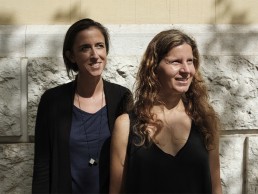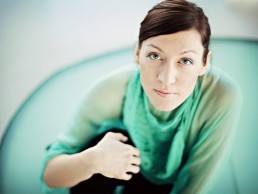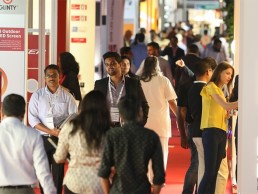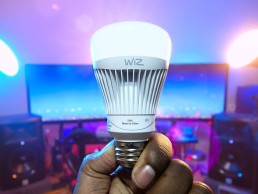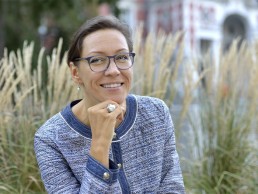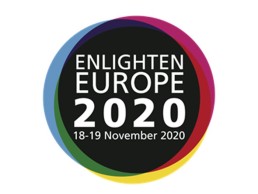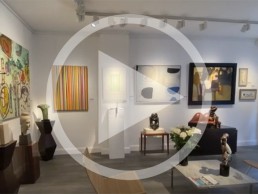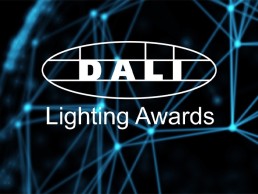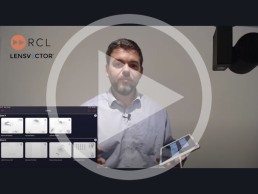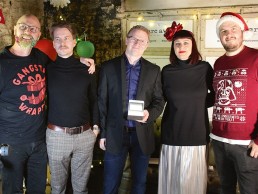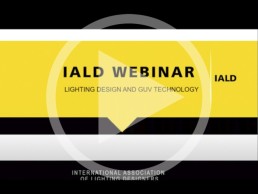Paula Rainha & Joana Mendo
After several years of collaboration, Paula Rainha and Joana Mendo have joined forces to form new lighting design studio, Filamento. arc speaks to the duo about their aspirations for the new studio.
How did you both get into lighting?
Paula Rainha (PR): I wanted to be a dancer at some point in my life, but I ended up training as an architect. When I finished my degree, I felt that dance was missing from my life, and I started my quest on how to combine dance and architecture as a career. I found stage lighting design as a way to define space in the dance world and I applied for a MSc in Lighting in London. Cutting the story short, I never did stage lighting design but I completely embraced the architectural lighting design profession.
Joana Mendo (JM): After working some years as architect, I realised that light had always been my favourite subject and the priority in all my conceptual approaches. At the time I wasn’t quite sure if I could make it my profession, but my interest was growing bigger and bigger. I think also due to the adaptation from sunny Lisbon, where I grew up, to a northern European city, where light and sun are treasured, as they only come in small doses in winter. This was in 2008, when I got accepted for an internship at Lichtvision in Berlin, where I learned a lot and started understanding what it is to design light. I never wanted to do anything else after that.
Can you describe your lighting career so far?
PR: I started my lighting career in London with Gary Campbell at Campbell Design in 2005. Then I moved to BDP Lighting where I stayed for another two years before moving back to Lisbon in 2009, where the profession was almost unknown. After a difficult start in Lisbon, during the credit crunch, in 2011 I had the chance of winning a competition that made me travel the world in search of lighting installations. This also gave me the opportunity of meeting architects and raise awareness within the local industry. 10 years later I’m proud to say that I’ve established my own company, Synapse, and I started working with some of the largest and most recognised architectural practices in Lisbon.
JM: I’ve worked for different companies in Berlin and London, which were extraordinary experiences, both professional and personal. In larger companies like Lichtvision and Arup I learned about the latitude of our profession, that you can do so many things within lighting and you can reach so many people with your work. While working with Marci Song at Seam Design and living in London, I was reassured of the importance of design and our contribution to people’s lives, when we create a certain environment or atmosphere with lighting. My career is an important part of life, moving around, experiencing, keeping my eyes open and trying to respond the best that I can to the opportunities that cross my path.
How did the two of you meet and begin working together?
PR: We met in London, in a “Configuring Light” workshop in 2014, after knowing of each other and exchanging some emails (there were not many Portuguese lighting designers back then). Through many great conversations and sharing of professional experiences, we understood that we agreed on lots of subjects and had very compatible design backgrounds. It was a connection that got stronger very naturally. In 2019, when Joana moved back to Portugal, Synapse had a lot of work going on, as the country was booming with tourism and new investments, and I asked Joana to jump in and help out.
When was the decision taken to officially merge Synapse into a new company?
JM: After working for nearly a year together in outstanding projects such as Convento do Beato and a number of high-end hotels, it made sense to officially join forces and we decided to merge our companies.
Why did you decide to create a brand new practice?
PR: When we merged our companies, the issue was raised on whether to keep the name Synapse or start a new brand. We thought it made sense to open a new chapter for both of us - Joana for leaving Germany and her sole trader company and me for starting a new venture, with a larger structure and a business partner.
What would you say is the design philosophy for Filamento?
JM: Filamento is an independent lighting design practice – in some countries this is still not very common, particularly in Portugal. In our projects we are interested in providing the best design, technical and sustainable solution to our client, and we believe the only way to achieve this is to stay independent and work closely with the design team. Due to our architectural background, we are mindful of how light can reveal and uphold the built environment, its conceptual form and support its function. We believe each project is unique and that lighting can have a great impact within architecture and the people that use these spaces.
Do you have a particular area of specialism?
PR: Actually no, even though, due to the current market, we have been working a lot in hospitality and corporate office projects. Due to our past experiences, we have a strong interest in cities, the public realm and exterior lighting projects as well.
What are your aspirations for Filamento? What do you hope to bring to the lighting world?
PR: We would like Filamento to be recognised by the quality of our designs and continue to be involved in landmark projects, with extraordinary design teams that keep challenging us to come up with innovative solutions. Our wish is that the practice provides opportunities for us and the team to learn and grow as designers, in the long term. We also hope to play a role in developing a lighting design culture in Portugal, by bringing our international experience here and raising awareness on the impact of light in the built environment.
What do you think the future holds for the lighting industry?
JM: The lighting design community has been showing an extraordinary capability to connect in the digital world. Especially during this pandemic, we all realised that remote work and interaction within our profession can be very successful. We see this as an opportunity for smaller practices to work internationally and for some smaller communities to open up to the global market. For quite a long time, lighting design in Europe was centred mostly in Germany and the UK - we believe this is starting to change, which can enrich the lighting industry long term.
Asst. Prof. Dr. Karolina Zielinska-Dabkowska
WiL Ambassador for Poland, Asst. Prof. Dr. Karolina Zielinska-Dabkowska IALD, IES, CIE, MSLL, RIBA, reflects on her lighting career, as a designer, researcher, educator and mentor.
Although Asst. Prof. Dr. Karolina Zielinska-Dabkowska is now recognised as one of the primary educators and trend setters in the lighting design world, her career in lighting design almost didn’t happen.
“I never planned a career in lighting design, it just evolved on its own,” she said. “I always wanted to be an architect, and graduated with two degrees in Architecture. Until 2000, I was unaware that lighting design existed as a profession.”
Zielinska-Dabkowska first ‘discovered’ lighting design while studying architecture in Germany, where she noticed that in Hildesheim, at the HAWK University of Applied Sciences and Art, you could study architectural lighting design – the first such lighting programme in Europe.
Although she has some memories of playing with candlelight as a little girl growing up in Poland, it wasn’t until 2002, while participating in a lighting design workshop in Alingsås, Sweden with Jonathan Speirs and Mark Major, that Zielinska-Dabkowska realised lighting design was the career she wanted to pursue. “I was immediately hooked, as I always felt my architectural design was incomplete, that something important was missing. That special something turned out to be light.”
Zielinska-Dabkowska followed this interest in light and began working for L-Plan Lighting in Berlin in 2002. It was here where she began to understand the true potential of lighting design. “While working in Berlin on the illumination of the new Munich airport terminal, I realised for the first time, as a building architect for many years, that I could only work on one large project at a time. Whereas, a lighting designer is fortunate enough to work on many projects concurrently because these projects are at different stages of development and sometimes they are located in different places around the world,” she said. “It could be an urban lighting masterplan, the illumination of an exterior façade, the interior of the building, or elements of landscape architecture, there are many possibilities.”
Upon graduating in Architectural Engineering at HAWK in Hildesheim in 2004, she left for New York City to work for Fisher Marantz Stone.
“My departure to New York to gain experience in one of the oldest lighting design practices in the world, and to work with a great international team on many world-famous projects, convinced me that this was the professional path to follow,” she explained. “Light gives the opportunity to change architecture, to visually modify its form, material, etc.”
She relocated again in 2005, moving back to Europe to start a new role as Senior Lighting Designer at Speirs + Major’s London office, where she worked on numerous projects centred around external illumination. “This is also where my knowledge about urban lighting masterplans (ULM) developed, and thanks to this valuable experience, enabled me to contribute a chapter titled “Urban Lighting Masterplan – origins, definitions, methodologies and collaborations”, for a RIBA book called Urban Lighting for People: Evidence-Based Lighting Design for the Built Environment,” she explained.
Then, after a chance encounter during a flight in 2007, Zielinska-Dabkowska was offered an interesting job opportunity at Light Bureau by its founder, Paul Traynor. “The company was redesigning the previous lighting proposal for the new Main NATO HQ in Brussels, and I was going to be fully responsible for this, and other exciting projects.”
Six years later, due to family reasons, she relocated to Switzerland in 2013, where she started working for Reflexion, and after obtaining her PhD degree in Technical Sciences with honours from the Faculty of Architecture at Gdansk University of Technology (GUT), Poland, she founded designs4people [d4p].
With a CV that has seen her work for three of the largest, most well-known lighting design practices in the world, Zielinska-Dabkowska believes she learned a great deal before setting up her own studio. “I decided to join these companies to know what makes them stand out and discover why they’re so unique and different,” she said. “I soon realised that the creative designers of these companies work under visionary individuals. Also, each company has a specific design approach and process in place, so combining these experiences was highly useful.”
Zielinska-Dabkowska elaborated on how these experiences led to a shift of ambition in her lighting design career: “At first, I was only interested in creating beautiful spaces with the help of lighting and the expression of my creativity, but it didn’t take long before I understood there was much more to realise,” she said.
“My vision for the future soon became focused on redefining what it meant to design healthy lighting for humans and built environments, via education, research and policy making. I believe we are just at the beginning of a long and winding road. In today’s world, I think individuality equates to a designer’s ego, which is not my aim, rather, as things become more complex in terms of knowledge inputs, the solution involves the creation of intradisciplinary teams and teamwork.”
With this in mind, Zielinska-Dabkowska explained in more detail the design philosophy for her consultancy, designs4people: “We no longer solely design illumination just to create memorable, highly aesthetic spaces during the night. Our approach is unique and it’s centred on the user and his/her habitable environment.
“This involves basing our designs on the newest research knowledge in the fields of astronomy, biology, medicine, ecology, etc, whilst also applying practical experience. “Essentially, I am a problem solver. My love for integrated lighting design involves a hands-on process, lighting mock-ups and tests onsite in order to find the best possible lighting answers. A professional lighting designer with my perspective and background, has a responsibility and moral obligation to use lighting with far more care, caution and restraint. More recently, there’s been an increasing number of municipalities seeking my advice on how to create healthy, environmentally conscious nighttime built environments that exist in harmony with architecture, urban planning and the natural landscape. There’s growing awareness now, of the value and importance of providing a safer environment for humans, flora and fauna by significantly improving the way artificial lighting is applied both in urban and rural areas, and particularly, in places recognised as ecologically significant, or where there are vulnerable species.”
Alongside the aforementioned NATO HQ in Brussels, Zielinska-Dabkowska believes she has been privileged to work on a number of high-profile, well known projects. Some examples cited by Zielinska-Dabkowska include the Burj Khalifa in Dubai and the Tribute in Light Memorial art installation in New York while at Fisher Marantz Stone, the lighting vision for King’s Cross Lighting masterplan, the external illumination of the Granary Building and Granary Square in London and the external lighting for the new astronomical observatory cone at the Royal Observatory Greenwich while at Speirs & Major, and the urban lighting masterplan for Porto Montenegro, which includes the illumination of an historic crane, for Light Bureau. “One thing worth mentioning, is that these projects always involved teamwork,” she added.
While she has worked for some of the major lighting design studios across her career, Zielinska-Dabkowska cited Lesley Wheel as her lighting hero, one of the founders, and the only female founder of the IALD. She also has a strong admiration for her friend Anne Bureau. “Anne has not only established herself as a female lighting designer over the last 25 years, but she’s also capable of handling large scale projects almost on her own, and on top of that, she has a family with two children, enjoys what she does and is an authentic person. I do not know how she does it all!”
Throughout her lighting design career, education has also played a key role for Zielinska-Dabkowska, both in her own studies, but also through her work as a mentor and teacher. This is something she feels came naturally to her when she was young. “I seem to have teaching in my blood,” she said. “Very early on, I mentored people in the lighting design offices I worked for. Often, we had students who would intern with the company and would stay during their Master’s thesis semester, and I would mentor and supervise their Master’s thesis.
“This developed gradually over the years while I was a guest lecturer for the Polytechnic University of Catalonia (UPC) in Barcelona, and also during my time as a senior lecturer at Hochschule Wismar University of Applied Sciences: Technology, Business and Design in Germany for three years, I oversaw Master’s and PhD students.”
More recently, in 2018, Zielinska-Dabkowska was offered a part-time Assistant Professor position at GUT, where she founded the research lighting laboratory, GUT LightLab, which conducts research on various aspects of light and lighting in the built environment.
Now, she is currently involved in the new Erasmus+Strategic Partnership project called Light4Health – Health Research-Based Innovative Open Educational Resources and Tools for Lighting Design Students and Professionals. “The team is developing a novel educational course to teach health research methods and findings to lighting designers at the graduate level,” she explained. “I am especially excited as Prof. Dr. George Brainard and his lab are involved in this work.”
Over the last 15 years, since her early days in the profession, Zielinska-Dabkowska has noticed a marked improvement in the level of education on offer for prospective lighting designers.
“Today, it’s much easier to deepen your knowledge about lighting design than when I began,” she said. “Quality education is now offered in countries such as the UK, US, Germany, Sweden, Denmark and Spain. Interestingly, each of the programmes have a slightly different focus point, which I think is necessary. I love the variety.”
“While I was working for Hochschule Wismar as a senior lecturer, I often had requests from my colleagues, who were principals of top international lighting design consultancies, wanting recommended students for internships. After finishing their obligatory internship, many of my students were given a great job position before they even graduated.”
She continued that this increased level of educational opportunity only helps to boost the profile of lighting design as a profession – something she feels could still be enhanced. “Good quality education is one of the important pillars of professional recognition. For example, architects and civil engineers are subject to legal restrictions and requirements. As such, they can only be carried out by holders of specific qualifications. Yet, with lighting design, such credentials remain unrecognised worldwide. I hope one day soon this will change for the better.”
However, while Zielinska-Dabkowska does believe there is more recognition of lighting design, thanks to the greater availability of higher education on the subject, she feels there is still some way to go for it to be considered an essential service. She explained: “When there is an economic crisis, the first professionals who are mistakenly, often seen as just ‘nice to have’ and ‘unnecessary’ on a project, and therefore, easy to get rid of, are lighting designers and landscape architects.
“Today, I do see a trend of some of the large engineering companies such as Arup, WSP, AFRY and Buro Happold, offering lighting design in their services. With the rise in complexity, budgets, and also the scale of the latest architectural projects, clients increasingly prefer to deal with one company, i.e. a multidisciplinary consultancy that can provide all the required services under one roof. This way of appointing the design team is perceived as creating a better flow of communication between the different disciplines, which can facilitate faster solutions to problems. Moreover, responsibility is focused on one entity. The disadvantage with this approach, is that it can at times, prevent the introduction of innovative solutions to the project in order to avert risk, so there may be a tendency to avoid employing smaller or less known new outlets.”
Although she has achieved a great deal throughout her lighting design career, Zielinska-Dabkowska revealed it was a struggle for her to be to where she is in now. In her early days as a young woman she “had to fight to get to my current position. I wish I had a mentor back then but I did not,” she said.
“Most often, I was the only female and the youngest person on the project team. Many times, I also had the impression I was denied the same entry level on a project as my colleagues simply because I was a woman, and that I had to first prove my skills and competence. This has changed now as I have more grey hair [she laughs], or perhaps there has been a slow shift in attitudes of investors or architects?!”
While the situation is improving for her personally, Zielinska-Dabkowska still has some frank concerns regarding inequality within the lighting design field, both in terms of pay, and opportunities for career progression. “I remember once in the past, discovering my work colleague was earning 10% more than I was, even though we shared the same position and I was dealing with international projects, which involved a lot of travel,” she said. “When I questioned my boss about this discrepancy the answer was “you don’t have kids.” That seemed grossly unfair.
“From discussions with many of my colleagues, who are male owners of lighting practices, there appears to be some hesitation in hiring a woman of reproductive age. What’s preferred, are graduates who still want to have a career, who can work hard and believe it’s too early to settle down and have a family. Sadly, for those who do decide to have children, after maternity leave, often their contracts are terminated. This is unjust in our society and should change in our field as well. A real-life example, is of a good friend who was senior lighting designer in a large company. When her maternity leave ended, she was asked to depart after ten years of employment with that business.”
“This situation has impacted me personally as well. Throughout my career, due to the demands of my profession and the many ever-present expectations, the timing was never right to settle down and have a family of my own. If you were to ask me if I regret anything about my career, my answer is a resounding yes. I would have loved to have had children, but it’s impossible to turn back the clock.”
While her story is heartbreaking, it’s both striking and refreshing to see Zielinska-Dabkowska talk so candidly about what can be an uncomfortable topic, but such inequality is one of the core reasons that Women in Lighting (WiL) was established. Zielinska-Dabkowska has been involved with the initiative, acting as the Women in Lighting Ambassador for Poland, both to raise the profile for women in lighting design, and also to establish the lighting design profession in Poland.
“It is very hard to work here – I am the only IALD professional member in the country so far. It’s also challenging being a woman lighting designer. Most of my competitors here provide lighting design services for free by selling lighting equipment to cover their costs,” she explained.
“We will be unable to establish an independent lighting design profession in Poland if such procedures remain in place. Often, projects are lost as my fee proposal is considered too expensive. The general attitude of architects also needs to change. They expect between 10-25% of the lighting equipment budget price to be paid to them by lighting suppliers who also provide so-called “lighting design”. It’s unfeasible to compete with this.”
Looking forward, Zielinska-Dabkowska would like to see an increased impetus on the importance of cross-disciplinary research – something she feels would both improve the stature and recognition of lighting design as a profession, while also leading to an improvement in the health and wellbeing of both humans and wildlife. “The only way to establish lighting design as a recognised profession is to ensure a transdisciplinary, design-led research approach is established, in order to generate strategies that support both the health and life quality of humans and wildlife,” she asserted.
“We need to become experts in our own right and be paid for this complex knowledge as well as the proper methods to apply it. For us as practitioners, it’s crucial to gain new knowledge and an appropriate integration of skills, methods, data, and perspectives from different scientific fields connected to health, wellbeing and biology.”
Since 2014, Zielinska-Dabkowska’s has been active on the Scientific and Organising Committees of the Light Symposium Wismar, Germany, which is a platform to connect research and practice. She’s also been involved in public policy making connected to lighting and light pollution and is on the Technical Committees of the CIE, IES and IDA, which all work on the development and establishment of lighting standards and/or guidelines.
This means that Zielinska-Dabkowska’s role as an educator within the lighting profession shows no sign of slowing down, and she concluded that her role as a mentor and teacher is one of her main sources of inspiration. “I love to mentor my Master’s and PhD students on light and lighting,” she said. “My students and colleagues who have developed their skills under my tutorage and are recognised in the lighting design field, provide endless inspiration and are my ultimate lighting design qualifications.”
www.designs4people.com
www.researchgate.net/profile/Karolina_Zielinska-Dabkowska
New dates announced for Light Middle East 2021
(UAE) – Show rescheduled from January to late September.
Light Middle East has been rescheduled from January to September 2021, organiser Messe Frankfurt Middle East (MFME) has announced.
The three-day event was initially set to run in January 2021, but will now take place from 28-30 September at the Dubai World Trade Centre, where it will co-locate with two other MFME-organised shows: SPS Automation Middle East, a platform for industrial automation solutions; and Middle East Cleaning Technology Week.
Dishan Isaac, Senior Show Manager for Light Middle East, said the move is widely supported after careful consideration and consultation with industry stakeholders, including exhibitors, trade professionals and supporting associations.
“Moving Light Middle East to September 2021 is in the best interest of our valued customers, and the co-location with SPS Automation Middle East and Middle East Cleaning Technology Week offers a level of synergy around the built environment,” said Isaac.
“In its 15th edition, Light Middle East 2021 will solidify its position as the region’s number one networking and sourcing platform for the entire scope of architectural, decorative, technical, industrial, indoor and outdoor lighting solutions.
“The platform will be packaged with the return of the THINKLIGHT Forum, offering insights and reflection on the evolution of our industry, particularly in light of the pandemic we’re now navigating.”
The newly rescheduled event, which is expected to welcome more than 300 exhibitors and 6,000 visitors, will open just a few days ahead of Expo 2020 Dubai, which takes place from 1 October 2021, through to 31 March 2022.
“Held under the theme Connecting Minds, Creating the Future, Expo 2020 Dubai is expected to attract more than 25 million visitors, with 70% coming from outside the UAE,” added Isaac.
“Once Light Middle East concludes, international exhibitors and visitors can take advantage of their time in Dubai and explore the myriad country pavilions and unique features of this six-month long mega event.”
Signify, Ansell Lighting and 4Lite partner to introduce WiZ Connected to UK markets
(UK) – Ansell and 4Lite products to incorporate WiZ Connected technology.
Signify, Ansell Lighting and 4Lite – a subsidiary of Japanese lighting company Endo Lighting – are partnering to introduce WiZ Connected to both the professional and consumer markets in the UK. Ansell will be adding the broad range of WiZ Connected products to its OCTO portfolio, while 4Lite will add to its range of products aimed at the consumer market.
“We are delighted to be able to offer WiZ IoT platform within the OCTO and 4Lite brand proposition and breakthrough innovation with dual connectivity technology,” said Mark Abbott, Managing Direct at Ansell and 4Lite. “We want to offer cutting edge connected solutions and this partnership with WiZ reflects that.
“We have taken great time and care to ensure we align ourselves with partners that offer the same values and ethos as Ansell and 4Lite. We are looking forward to working with WiZ and excited to launch a number of exclusive products to the market.”
The WiZ connected lighting product range consists of lamps, a retrofit connector, LED strip and several accessories, all commissioned via the WiZ app. WiZ Connected technology is embedded into Ansell’s and 4Lite’s luminaires, meaning no hubs or additional wiring is required.
The OCTO WiZ Pro range provides a hybrid technology consisting of WiFi and Bluetooth. This hybrid technology is new for 2020, being the only dual protocol solution currently on the market, allowing seamless pairing and scalable deployments. The WiZ Pro software suite offers multi-users and multi-location options, making it suitable for new or existing residential buildings, restaurants, shops and the education sector.
“We are very pleased to partner with Ansell Lighting and 4Lite as their forward thinking approach reflects our own. This partnership is very emblematic of our ability to address the needs of lighting vendors who target simultaneously consumer and professional markets,” said Jerome Leroy, Head of Marketing, Platform and Ecosystem and WiZ Connected.
www.wizconnected.com
www.anselluk.com
www.4likeuk.com
Zielinska-Dabkowska recognised at 2020 IDA Awards
(Poland) – Asst. Prof. Dr. Karolina Zielinska-Dabkowska given Galileo Award.
Asst. Prof. Dr. Karolina Zielinska-Dabkowska has been recognised by the International Dark-Sky Association (IDA), picking up the Galileo Award at the 2020 IDA Awards.
Each year, the IDA recognises and celebrates the achievements of individuals and groups who are committed to its mission to preserve the night.
The Galileo Award is given in recognition of outstanding achievements in research or academic work on light pollution over a multiple-year period. Through her ongoing work, both as a researcher and lighting designer, Zielinska-Dabkowska has recognised the many adverse impacts of artificial light at night on human health, ecosystems, the environment and the night sky.
She also promotes and advances the mission of IDA to preserve the night sky in her work by authoring and co-authoring research articles on the topic. Additionally, she provides outstanding education to the lighting community via professional and scientific conference presentations. She also works with the policy-makers to combat light pollution through the lighting standards and guidelines she co-developed. Consequently, lighting practitioners implement these in their daily practice.
“In short, Karolina has had a profoundly positive impact on the lighting design community due to her consistent activity and sharing of research,” the IDA said.
The 2020 IDA Awards recognised 18 individuals and groups from around the world, including Zielinska-Dabkowska, with representatives from New Zealand, Ireland, USA, Serbia, Chile, Australia, Guatemala, Hong Kong, India and France honoured.
Registration open for virtual IALD Enlighten Europe 2020
(Europe) – IALD’s Enlighten Europe conference to be held online on 18-19 November.
The IALD has announced that registration is now open for Enlighten Europe 2020. The conference will be held online for the first time this year, owing to the ongoing Covid-19 crisis, and will take place on 18-19 November.
A popular fixture in the international lighting design community, Enlighten Europe draws a diverse audience of lighting designers, manufacturers and suppliers, educators, students and other related design professionals. The shift online makes the conference more accessible to a broader audience of professionals in the international lighting community.
“IALD has represented the profession of lighting design for more than 50 years, and this year, it is more important than ever to be that central point of connection for the greater lighting community,” said IALD President, Douglas Leonard.
“Our European members and friends have been looking forward to being together this year. While we are unable to meet in person, IALD’s Enlighten Europe 2020 online is our opportunity to bring our European lighting community together, foster personal connections, share learnings and participate in a new virtual experience.”
Created for and by lighting designers, Enlighten Europe 2020 online is designed to bring the lighting community together in new and exciting ways, at a time when staying connected matters most. This year’s event will feature the interactive “Light Playground”, special social gatherings, engaging breakout discussions and 15 luminaries of lighting from around the world. Speakers at this year’s event include: Andreas Schulz (Licht Kunst Licht); Monica Lobo (LD Studio); Julia Hartmann (Lightsphere); Kai Piippo (Light Bureau); Carla Wilkins (Lichtvision); Kaoru Mende (LPA); Dawn Hollingsworth (Darkhorse Lightworks); and former IALD President David Ghatan (CM Kling + Associates), among others.
“Given the challenges that many businesses are experiencing this year, the IALD is offering its Enlighten Europe 2020 registration at a significantly reduced rate,” added Marsha Turner, IALD CEO. “This decision was made so that our European members can easily connect with each other and gain valuable access to continue their professional development.”
Learn more and sign up for IALD’s Enlighten Europe 2020 online here.
Remote Controlled Lighting (RCL): Alan Wheatley Art
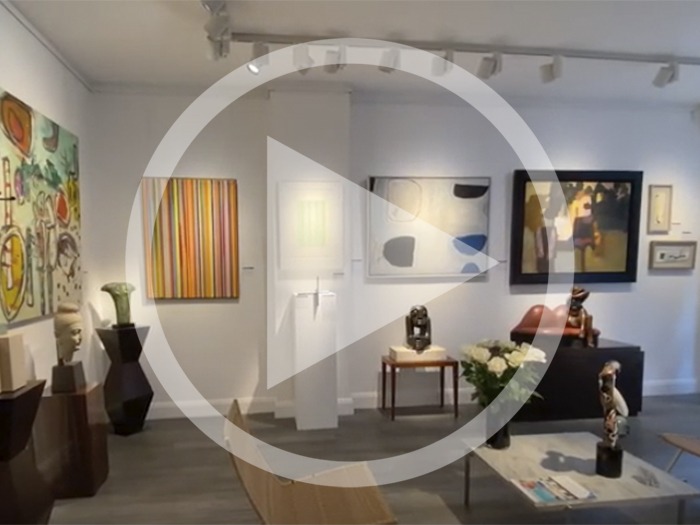
Join Remote Controlled Lighting (RCL) for a tour around the stunning Alan Wheatley Art gallery in London. This gallery is the first in the area to use DRX1 luminaires with LensVector variable beam technology.
DALI Lighting Awards open for entries
(USA) – Inaugural DALI Lighting Awards to celebrate the best use of DALI control solutions.
The DALI Alliance (DiiA), the global industry organisation for DALI lighting control, has announced the call for entries to the inaugural DALI Lighting Awards.
Held in association with arc and the IALD, the awards will look to showcase and celebrate the best use of DALI control solutions in lighting projects across the world, while also recognising the importance of producing great quality illumination.
All types of commercial, architectural and industrial lighting projects linked with DALI technology can be nominated, and there are different categories for indoor and outdoor lighting. There is no entry fee, and entrants can nominate multiple projects on an individual basis or as part of a team. Entries can be submitted from any section of the supply chain (including lighting designers, electrical consultants, architects, installers and commissioning engineers, among others) and there is no requirement for DALI Alliance members to participate.
Judges for this year’s awards include arc editor Matt Waring; lighting designer Tad Trylski, active member of the IALD and former chair of its industry liaison group; and Scott Wade, Technical and Certification Manager for the DALI Alliance.
Entrants can submit projects via an online entry form on the DALI Alliance website here. Entries for the awards are open until 30 November 2020, with the winners announced in January 2021 via a webinar hosted by arc.
RCL & LensVector: [d]arc room livestream workshop

During a workshop held at [d]arc room livestream, RCL and LensVector showcased technology that streamlines commissioning, removing the need for ladders and manual focussing and aiming of fixtures whilst offering complete flexibility over lighting. Have complete control over beam width, intensity, colour temperature, positioning and scene setting over hundreds of luminaires across multiple spaces, quickly and easily, and from ground level.
www.rclighting.com
www.lensvector.com
[d]arc awards postponed until Spring 2021
(UK) - Entry period for [d]arc awards extended until 17th January 2021.
Following the announcement of stricter Covid-19 restrictions by the UK Government, the [d]arc awards event, [d]arc night, has been postponed from 3rd December and will now take place in Spring 2021 (date to be announced later in the year).
Due to this postponement, the awards entry deadline has been extended to 17th January 2021. The entries will then be shortlisted by the independent judging panel of designers and the voting period will commence in February. This new deadline will enable projects and products launched throughout 2020 to be entered into the awards, making the [d]arc awards a true review of the entire year.
Paul James, Managing Director of [d]arc media, commented: “Although it is disappointing to have to postpone the [d]arc awards it is the right thing to do given the uncertainty that currently exists over live events in the UK. However, the delay to Spring 2021 now means we can have an entry period throughout the whole of 2020, enabling the [d]arc awards to be a full review of the best projects and products launched in 2020.”
The awards is a unique concept utilising arc and darc magazines’ reputation as being the most widely read and respected lighting design publications in the world. In collaboration with creative consultants Light Collective, the peer-to-peer awards process provides a unique opportunity for every practice to get involved.
Head over to darcawards.com to view the latest entries and for more information on how to take part using the easy-to-navigate awards system.
The awards are split into six main categories:
STRUCTURES: Low Budget / High Budget
PLACES: Low Budget / High Budget
SPACES: Low Budget / High Budget
ART: Low Budget / High Budget / Bespoke
EVENT
KIT: Exterior / Interior / Decorative
After completing your submission, the entry will be verified before being displayed on www.darcawards.com and your company qualifies to be part of the darc directory, a comprehensive online lighting design resource that can be used by designers and clients for inspiration. Enter as soon as possible to get the most out of your online presence.
Once the entry period ends on the 17th January, the submissions in each category will be shortlisted by the judging panel of independent designers. Then it's over to the design community to take part in the peer-to-peer voting process (only independent designer's are eligible to vote!).
All winners will be announced at the exclusive [d]arc night party, which will also be streamed online to a worldwide audience.
IALD: Lighting Design and GUV Technology

As we navigate into a “new normal” and get a better grip on what business operations in a world transformed by COVID-19 look like, there are lots of questions and discussions on how to modify buildings and buildings systems to mitigate virus transmission and protect building occupants. One item that is being discussed with a great deal of interest is Germicidal Ultraviolet Lighting (GUV).
The latest IALD webinar features panelists Darcie Chinnis, HLB Lighting Design; Dr. Robert Karlicek, Rensselaer Polytechnic Institute; and Dave Pfund, The Lighting Quotient. The panelists provide an overview of GUV technology, what the latest research says, the concerns/issues lighting designers need to consider, and what lighting designers should discuss with manufacturers and/or their clients.
This webinar is sponsored by Tambient by The Lighting Quotient (www.thelightingquotient.com)
teamLab: Shower³
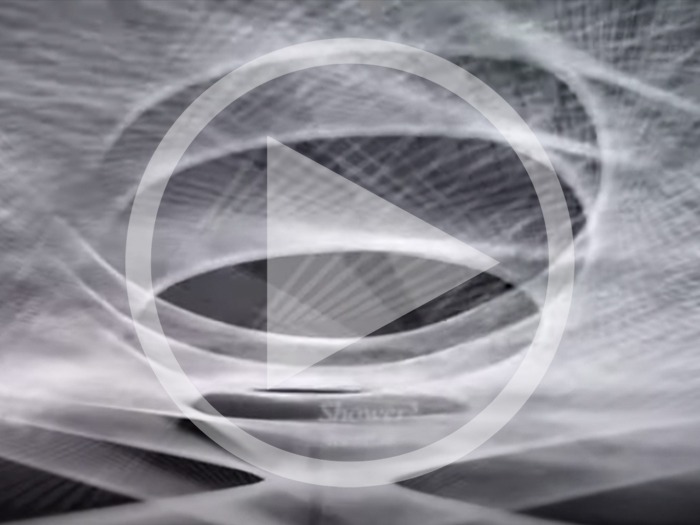
The latest permanent installation from teamLab, entitled Shower³ is scheduled to open at MASTER in Shanghai this month. Shower³ is a light sculpture space that immerses the body in a three-dimensional shower of light.
Over the past few years, teamLab has been working on a series of light sculptures that focus on the reconfiguration of space and the construction of three-dimensional objects using light. The Light Sculpture - Line series is a group of artworks made up of a collection of moving lines of light. The Light Sculpture - Plane series consists of works made of laser planes. Shower³ combines these two series to create a massive light sculpture space across an entire space, immersing people's bodies and changing their perceptions of space.
Video courtesy of teamLab.

